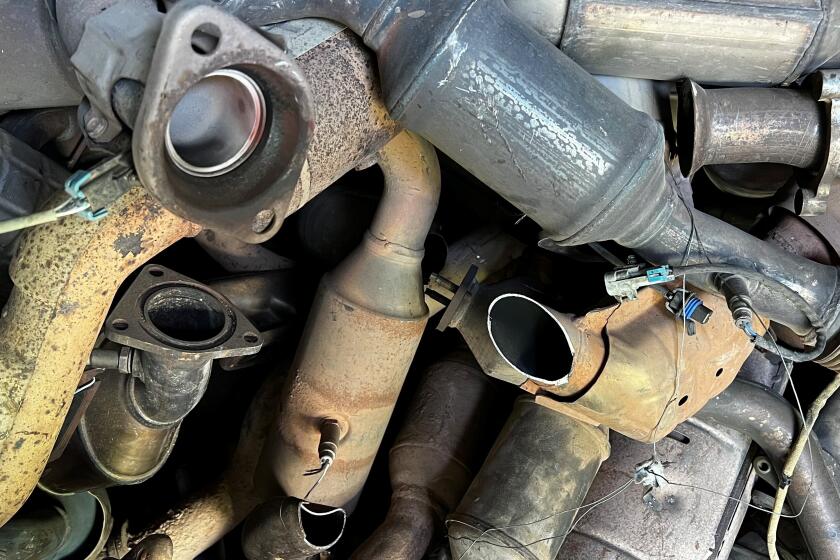ORANGE COUNTY 1990 : The Family Will Attract More Attention, Support : Care: Increased funding for child and elder care and four-day work weeks are believed key in giving families more time together, so they can stay together.
- Share via
As government and business leaders increasingly view stronger families as the solution to drugs, lawlessness and an unskilled work force, parents and their children will finally receive long-needed support in the 1990s, experts predict.
“The ‘90s will be the decade of the family,” said Nancy Claxton, president of the Orange County Chapter of the National Assn. for the Education of Young Children. “Families are in trouble.”
In high-priced Orange County, where the ‘80s saw a baby boom and a divorce boom, both single and married working parents will remain throughout the ‘90s, experts said. Even more mothers than the current 70% may go to work in the ‘90s, experts say, due to rising home prices and a population decrease among young adults entering the work force.
In addition, the elderly will be living longer, creating more pressure on the baby boomers, primarily women, who will be responsible for their parents as well as their own children, sociologists said.
Meanwhile, the gap between the haves and have-nots will continue to spread, said Judy Auerbach, director of USC’s Institute for the Study of Women and Men in Society. On one end of the spectrum, the ‘90s in Orange County will find homeless mothers with young children. On the other, children will be status symbols, living displays of their parents’ affluence.
Such extravagance in lieu of altruism represents a dangerous trend, she said. “We’re all beginning to realize it’s gotten completely out of control,” she said. “The challenge is to figure out where we went wrong.”
Encouraged by a current celebration of families in movies such as “Parenthood” and “traditional values” movements, child advocates are mobilizing to seek greater public and private support for child care, maternal leave, elder care and flexible work hours. A Children’s Initiative, which would tax income for family issues and create a state commission on the family, may become a statewide ballot issue in 1990 or 1992, Claxton said.
“It will be difficult, with the initiative on the ballot, for candidates running for state office to avoid discussion of families and children,” she said.
On the bright side, others predict that with a federal child care bill pending, high-quality, affordable child care will become a reality in the ‘90s as a result of bipartisan support and significant funding. Many public schools will begin to offer day care for 3- and 4-year-olds, Claxton said. “I could see every school site (with) a before- and after-school program by the year 2000.”
Many family day-care mothers, who care for children in their own homes, may become professionals under new public-private programs offered through junior colleges, experts say.
More businesses, particularly large corporations, are expected to offer some form of elder care as well as child care benefits for the “sandwich generation”--working parents in their 40s and 50s caring for both children and aging parents.
Some families may have more time together as a result of “flex time”--required by government agencies as a way to reduce rush-hour traffic jams.
“A four-day, 10-hour week is probably a better family schedule than five eight-hour days,” said Harold Heinze, president of ARCO Transportation Co. in Long Beach, a member of the state’s Task Force on the Changing Family.
But at home, those parents may find more stress with their “baby boomerangers” and “latchkey seniors”--children of baby boomers and elderly parents both moving back in, sociologists said. Another looming challenge is the increasing number of stepfamilies, which present a volatile but uncharted emotional terrain of conflicting loyalties. “We believe this will be the No. 1 mental health problem for children,” said David Juroe, an Orange counselor who heads the Orange County branch of the Stepfamily Assn. of America.
Many predict that the rising divorce rate will level off in the ‘90s amid increasing concern that it may harm adults as well as their children. After divorce, some middle-age women will continue to find themselves unable to obtain adequate health insurance, said Carol Hatch, executive director of the Orange County Commission on the Status of Women. “Right now, it’s an overwhelming problem. . . .
“One of the biggest challenges of the ‘90s will be remaining a family,” she said. “Being able to stay in the same house, live in Orange County, find adequate employment and make sure your children have an appropriate education.”
More to Read
Sign up for Essential California
The most important California stories and recommendations in your inbox every morning.
You may occasionally receive promotional content from the Los Angeles Times.










